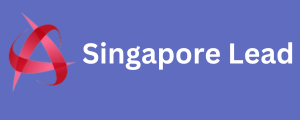Generating leads costs money and time. How do you know it’s worthwhile? Measuring ROI is absolutely crucial. It proves your overseas data marketing effectiveness. It justifies your budget allocations. Understand how to calculate your return.
Why Measuring Lead Generation ROI is Non-Negotiable
Without ROI data, you’re guessing. You can’t optimize effectively. You can’t justify your spend. Proving ROI demonstrates value. It secures future investments. It aligns marketing with business goals.
Justifying Marketing Spend
Every department faces scrutiny. Marketing needs to show tangible results. ROI provides that clear evidence. It transforms marketing from a cost center. It becomes a vital revenue driver. Show your impact directly.
Optimizing for Greater Efficiency
ROI data identifies lead generation tactics for consultants strengths. It reveals weak points too. You see which channels perform best. You learn where to cut back. This leads to smarter resource allocation. Maximize your lead generation efficiency.
Key Metrics for Calculating Lead Generation ROI
You need specific data points.
Cost Per Lead (CPL): Your Initial Investment
CPL is fundamental metric. Divide total campaign cost by total leads generated. (e.g., $500 spent / 100 leads = $5 CPL). Aim to reduce CPL over time. It shows initial campaign efficiency.
Lead-to-Customer Conversion Rate: The Bridge to Revenue
How many leads become paying customers? This percentage is incredibly important. (e.g., 100 leads, 10 customers = 10% conversion). A higher rate means better lead quality. It highlights sales effectiveness too.
Customer Acquisition Cost (CAC): True Cost of a Customer
CAC includes all sales and review business marketing costs. Divide total costs by new customers acquired. This provides a holistic view. Compare CAC with customer lifetime value. A low CAC indicates strong profitability.
Customer Lifetime Value (CLTV): Long-Term Worth
CLTV estimates revenue per customer. It projects revenue over their relationship. A high CLTV makes higher CAC acceptable. It justifies more aggressive lead generation. Focus on acquiring valuable customers.
Calculating Your Lead Generation ROI
The basic formula is straightforward.
Simple ROI Calculation
(Revenue Generated from Leads – Cost of Lead Generation) / Cost of Lead Generation x 100. Example: ($10,000 revenue – $2,000 cost) / $2,000 cost x 100 = 400% ROI.
Beyond Simple Dollars
Consider indirect benefits too. Brand awareness improvements. Increased market share. These contribute to long-term value. Quantify them where possible.
Tools and Practices for Accurate Measurement
Technology simplifies ROI tracking.
Integrated CRM and Marketing Automation
Connect your platforms seamlessly. Track lead sources automatically. Monitor lead progression consistently. Attribute revenue accurately to sources. This provides a clear data trail.
Regular Reporting and Analysis
Set up recurring reports. Analyze data trends diligently. Identify patterns and outliers. Present insights to stakeholders clearly. Make data-driven decisions confidently.
Proving Your Marketing Prowess
Measuring ROI transforms your approach. It makes lead generation strategic. It demonstrates tangible business impact. Show your value, secure your future. Make ROI your marketing superpower. Start tracking today.
